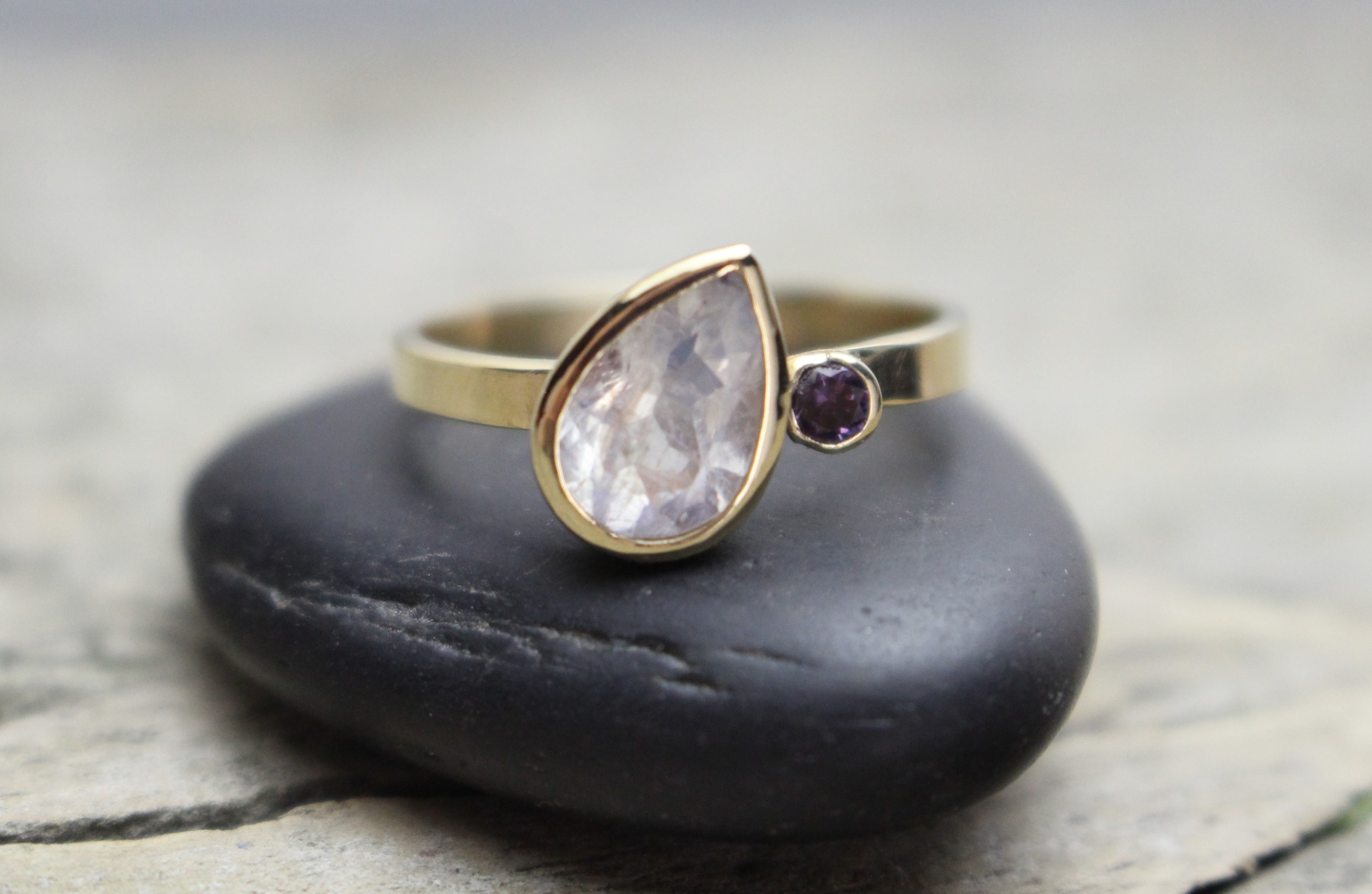Alexandrite is one of the more rare and desirable stones in the world. Its color changes with different types of light; the same stone can look a variety of colors from smoky purple in one type of light to bright fuchsia in another. A variety of chrysoberyl, an alluminate of beryillium, it forms when beryllium and aluminum combine with chromium and other trace minerals like iron and titanium. This specific combination of contributing variables happens very rarely in nature, contributing to the high cost of the stone. Many of the Alexandrites on the market are lab-created but they still exhibit the stunning color change the stone effect the stone is famous for known as the "Alexandrite Effect." The process of creating lab-grown Alexandrite is very costly in itself, so even synthetic specimens are on the expensive side.
It was discovered in in the Ural region emerald mines of Imperial Russia supposedly on the same day Tsar Alexander II came of age. When the area's mines were depleted, no other source was known until one was discovered 1987 in Minas Gerais, Brazil. It is now found in other places like Burma, India, Tanzania, Sri Lanka, and Madagascar. Sri Lankan Alexandrite is known to be the clearest with almost no inclusions at all.
Metaphysical properties are believed to improve self-discipline and concentration. It is thought to promote clarity of thinking and a desire to strive for excellence, promoting a desire to show one's "true colors." It is associated with the crown chakra as well as any of the chakras associated with the specific colors of the specimen.


